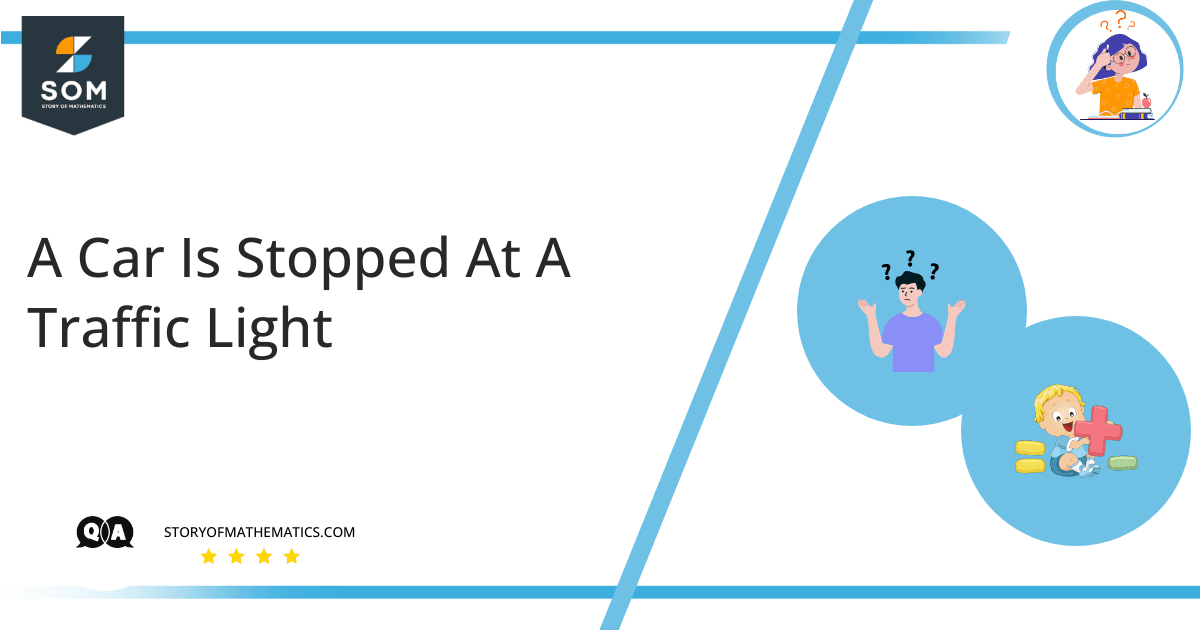
This
article aims to find a car’s average and instantaneous velocity at times. This article uses the concept of
average velocity.
Average velocity is the
change in position $(\Delta x)$ divided by the time intervals $(\Delta t)$ in which the displacement occurs. Average velocity can be
negative or
positive depending on the sign of the shift.
SI unit of average velocity is meters per second $(\dfrac{m}{s}\: or \:ms^{-1})$.The
formula for average velocity is:\[v_{avg} =\dfrac{\Delta x}{\Delta t}\]
Expert Answer
Distance from the light is represented by the equation $x(t) = bt ^ {2} – ct ^ {3}$.Where $b = 2.40 \dfrac{m}{s^{2}}$ and $c=0.120 \dfrac{m}{s^{3}}$.
Part (a)Distance from the light is:\[x (t) = bt ^ {2} – ct ^ {3} \]
At $t=0$\[x(0)=b0 ^ {2} – c0 ^ {3}= 0m\]
At $t=10s$\[x(t) = 2.40\times 10^{2} – 0.12 \times 10^{3}\]\[x(t) = 2.40\times 100 – 0.12\times 1000\]\[x(t) = 120m\]The
average velocity of car for time interval $t = 0s$ and $t=10s$ is given by:\[v_{avg}= \dfrac{dx}{dt}\]\[= \dfrac{120-0}{10-0}\]\[v_{avg}= 12\dfrac{m}{s}\]
Average velocity of car for time interval $t=0s$ and $t=10s$ is $ v_{avg}=12\dfrac{m}{s}$.
Part (b)Instantaneous velocity of car at $t= 0s$; $t=5s$ and $t=10s$.\[v_{x}=\dfrac{dx}{dt} = 2bt-3ct^{2}\]
At $t=0$\[v_{x}= 2b(0) -3c (0)^{2}=0\]
At $t=5s$\[v_{x} = 2\times 2.4\times 5- 3\times 0.12\times 25\]\[= 15\dfrac{m}{s}\]
At $t=10s$\[v_{x}= 2\times 2.4\times 10 – 3\times 0.12 \times 100\]\[= 12\dfrac{m}{s}\]
Instantaneous velocity at the time interval $t=0$;$t=5s$ and $t=10s$ are $v_{x}=0$,$v_{x}=15\dfrac{m}{s}$ and $v_{x}=12\dfrac{m}{s}$.
Part (c)The
car is at rest means that:\[v_{x} = 0\dfrac{m}{s}\]
Put the equation to zero, and we can find at what time the
car will be at rest again.\[2bt-3ct^{2}=0\]\[t=\dfrac{2b}{3c}\]\[t=\dfrac{2(2.40)}{3(0.120)}\]\[t=13.33s\]The
car will be at rest after $t=13.33s$.
Numerical Result
– The
average velocity of the car for the time interval $t=0s$ and $t=10s$ is $ v_{avg}=12\dfrac{m}{s}$.– The
instantaneous velocity of the car at $t=0$;$t=5s$ and $t=10s$ are $v_{x}=0$,$v_{x}=15\dfrac{m}{s}$ and $v_{x}=12\dfrac{m}{s}$.– The
car will be at rest after $t=13.33s$.
Example
The car is stopped at a traffic light. He then drives along a straight road such that his distance from the light is given $x(t)=bt^{2}+ct^{3}$, where $b=1.40\dfrac{m}{s^{2}}$ and $c=0.120\dfrac{m}{s^{3}}$.1: Calculate the car’s average velocity at time interval $=5s$.2: Find the instantaneous velocity of the car at time interval $t=5s$ and $t=10s$.SolutionDistance from the light is shown by the equation $x(t) = bt ^ {2} + ct ^ {3}$.Where $b = 1.40 \dfrac{m}{s^{2}}$ and $c=0.120 \dfrac{m}{s^{3}}$.
Part 1Distance from the light is:\[x(t) = bt ^ {2} + ct ^ {3} \]
At $t=5s$\[x(t) = 1.40\times 5^{2} + 0.12 \times 5^{3}\]\[x(t) = 1.40\times 25 + 0.12\times 125\]\[x(t) = 50m\]
Average velocity of car for time interval $t=5s$ is given by:\[v_{avg}= \dfrac{dx}{dt}\]\[= \dfrac{50-0}{5-0}\]\[v_{avg}= 10\dfrac{m}{s}\]
Part (b)Instantaneous velocity of the car at $t=5s$ and $t=10s$.\[v_{x}=\dfrac{dx}{dt} = 2bt+3ct^{2}\]
At $t=5s$\[v_{x} = 2\times 1.4\times 5 + 3\times 0.12\times 25\]\[= 23\dfrac{m}{s}\]
At $t=10s$\[v_{x}= 2\times 1.4\times 10 + 3\times 0.12 \times 100\]\[= 64\dfrac{m}{s}\]
 This article aims to find a car’s average and instantaneous velocity at times. This article uses the concept of average velocity. Average velocity is the change in position $(\Delta x)$ divided by the time intervals $(\Delta t)$ in which the displacement occurs. Average velocity can be negative or positive depending on the sign of the shift. SI unit of average velocity is meters per second $(\dfrac{m}{s}\: or \:ms^{-1})$.The formula for average velocity is:\[v_{avg} =\dfrac{\Delta x}{\Delta t}\]
This article aims to find a car’s average and instantaneous velocity at times. This article uses the concept of average velocity. Average velocity is the change in position $(\Delta x)$ divided by the time intervals $(\Delta t)$ in which the displacement occurs. Average velocity can be negative or positive depending on the sign of the shift. SI unit of average velocity is meters per second $(\dfrac{m}{s}\: or \:ms^{-1})$.The formula for average velocity is:\[v_{avg} =\dfrac{\Delta x}{\Delta t}\]